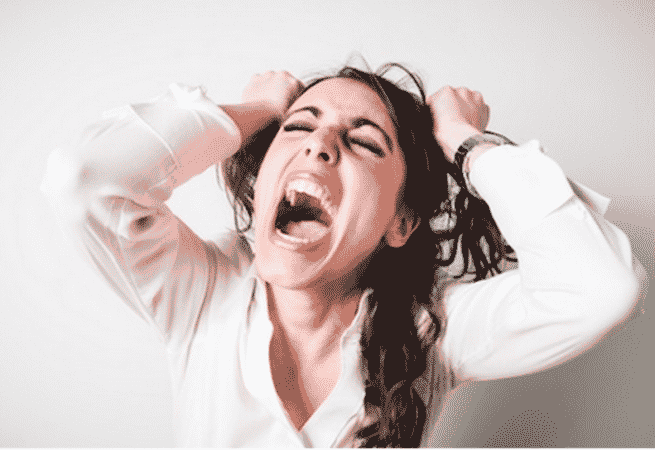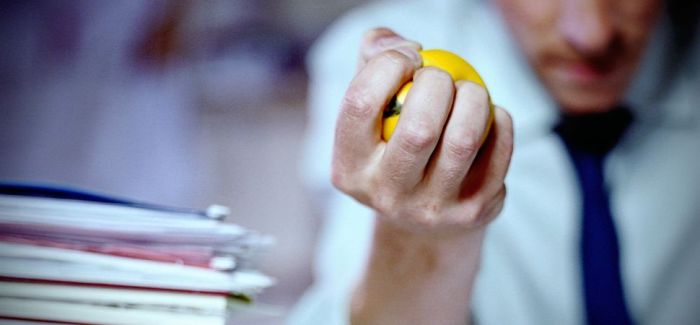You suffer from constant habit of pulling your hair. The habit is recurrent and irresistible.
You want to pull hair from your scalp, eyebrows or other parts of your body, despite trying to stop it.
Now, you know that’s uncommon and are inquisitive to know why it is happening to you. This condition is actually called Trichotillomania.
To know in depth about the condition, causes, and symptoms read the below article.
Table of Contents
What Is Trichotillomania?
Trichotillomania is a condition in which you feel the strong urge to pull your own hair. It can affect anyone irrespective of their age. You might feel like pulling hair from your scalp, eyelashes, eyebrow, or pubic area.
In a few individuals, the condition becomes so serious that they pull a large amount of hair which thereby leaves the bald patches on that area. However, a few might pull one strand at a time. The amount of hair pulled actually depend on the severity of the condition.
In this condition, you might be aware of pulling your hair or be absent-minded without notice what you are doing. The urge to pull out hair sometimes is as hard as the urge to itch.
You might feel an itching or tingling sensation on the scalp or skin. It seems pulling the hair is the only way to get optimum relief and you feel satisfied for a moment after pulling out hair.
Additionally, you might feel depressed, frustrated, depressed, or ashamed about it. You might worry you are different from others. Others might make fun of you as they don’t know the reason behind it. People suffering from this condition generally want to hide this unusual behavior from their friends and family.
Not only this, it can even make you feel low in esteem and can even hamper the way in which you think about yourself. You might feel less confident and difficult to socialize.
Causes Of Trichotillomania
There is no direct known cause of Trichotillomania. Researchers say stress can be a cause of it or it might be a person’s genes. More off, studies suggest people suffering from compulsive habits or obsessive-compulsive disorder might develop it when they can’t manage the things they want to.
The urge to pull the hair happens when the chemical signals in the brain called neurotransmitters don’t work properly. The chemicals create the irresistible urge to pull the hair. Pulling hair makes the victim feel satisfied and contented.
The more the person fulfills the urge the more relief they feel and this habit eventually becomes stronger. The longer you continue to do it, the harder it will be for you resist the urge.
Men are more prone to trichotillomania than women. However, in early childhood, both the boys and girls appear to be equally affected.
Signs And Symptoms Of Trichotillomania

Most of the people pull hair in private and generally try to hide the symptoms in public.
The signs and symptoms of trichotillomania are the following:
1) Repeatedly pulling your hair out, majorly from your scalp, eyebrows or eyelashes. However, sometimes you might pull hair from other body areas or sites too.
2) The tension and resistance to pull increases before pulling
3) You will pleasurable and relieved after pulling the hair.
4) There might be a hair loss or hair thinning, or bald patched on some areas of the body.
5) You prefer going for rituals that accompany pulling hair.
6) You might bite, chew, and eat the pulled out hair.
7) Pulling out or rubbing your hair on your lips or face can be a usual habit for you.
8) You repeatedly try to stop pulling your hair but you often fail in the attempt to resist the urge.
9) You suffer from anxiety and depression.
10) Feeling of distress at work, school, or when mingling socially.
11) You might pick your skin, bite your nails, or chew your lips.
The act of pulling might be focused as some people pull their hair intentionally to relieve stress. Like for example pulling hair to get relief. Alternatively, for some the urge to pull is automatic. They pull it without realizing what they are doing when bored, watching tv, or reading.
However, for some, it can be both focused or automatic depending on the even and mood. There can be events that might trigger the urge of pulling like resting the hand on your head or brushing the hair.
In addition to all these symptoms, Trichotillomania can also be related to your emotions. For some people hair pulling is a way to deal with negative emotions like tension, stress, anxiety, loneliness, fatigue, and frustration. Nevertheless, hair pulling can also be a way to feel satisfied and relieved. So, people might pull their hair to maintain positive feelings.
The signs and symptoms of the condition might vary severely with time. It’s a long-term disorder that has to be managed. If the condition is not managed the symptoms can go for weeks, months or years at a time. Rarely, the condition goes on its own.
Risk Factors
There are a few factors that tend to increase the risk of trichotillomania.
They are as follows:
- Family history: Genetics may play an important role in the development of trichotillomania. If some close relative in your family has trichotillomania it can pass it to you
- Age: Trichotillomania usually develops just before or during the early teens. Most of the sufferers are from age 10-13 years. The condition may last lifelong. Infants can also develop the condition. However, in infants, the condition is mild and self-treatable.
- Stress: Regular stressful situation can trigger trichotillomania in some people.
- Other Conditions: Conditions like obsessive-compulsive disorder, depression, anxiety, or other neurological conditions may exacerbate the condition.
Complications With Trichotillomania
Trichotillomania is not a very serious condition. However, it may have a negative impact on your life. The following complications may or may not be associated with trichotillomania.
A few of them are as follows:
1. Emotional breakdown: You might feel ashamed, embarrassment, and humiliation. You may feel low self-esteem, anxiety, and depression. Many people start alcohol abuse or drug abuse.
2. You might feel the problem with socializing and at work too. The urge to pull your hair in public may lead you to avoid social activities and job opportunities.
3. You may need to wear wigs, style your hair to disguise the bald patches or wear false eyelashes.
4. You might end up damaging your skin and hair. It may cause scarring, infections on the skin of your scalp or to the area where the hair are pulled out. This can permanently affect the hair growth.
5. A few people who eat their hair might lead to form a large, matted hairball (trichobezoar) in the digestive tract. With time, the hairball can cause weight loss, vomiting, intestinal obstruction, and even death.
Treatment For Trichotillomania
The treatment involves medicines or therapy or both.
The types of therapy that are carried out for trichotillomania include:
1. Habit Reversal Training
It is the primary treatment for trichotillomania. In this, you will be taught to substitute the urge with something else. You can clench your fist to stop it.
2. Cognitive Therapy
This therapy deals with managing the mental state. In this, you identify and examine the distorted beliefs you might have due to trichotillomania. All the mental stressors and anxiousness is overcome during these therapy sessions.
3. Acceptance And Commitment Therapy
This therapy can help you learn to accept your hair-pulling urges without responding to them.
The second treatment is the medications. The FDA has not approved any specific treatment for trichotillomania. However, some medications may help you reduce down the symptoms. A doctor may recommend you to take antidepressants like clomipramine (Anafranil).
In addition to this, few medications that influence the neurotransmitters related to mood might also be given. Best is to consult a doctor to overcome the condition. Their guidance at an initial stage can help loads and prevent the condition from worsening.
How To Get Over Trichotillomania

People with trichotillomania usually need some help from experts. They need medical and behavioral specialists to stop or decrease the symptoms. If the right measures are taken, it’s easy to overcome the condition. More off, if the urge is controlled regrowth of the pulled out hair is also possible.
To get rid of the hair pulling urge, a special type of behavioral therapy called habit substitution is required. In this, you have to take medicine or go for therapy or both.
The therapy focuses on the trigger factors and the urge to pull the hair. The victim is taught to control the urge on their own because if the urge is not controlled it becomes stronger and people often end up doing it more. Situations, events, and places that lead such urges are identified.
In addition to this, therapists teach people how to plan a replacement habit that they can carry out when they strongly urge to pull hair.
Replacement habits are usually satisfying like pressing a stress ball, using fidget spinners, handling texture objects, and carrying out the favorite hobby.
The therapist will help you how to use the new habit and resist pulling. With practice, the person gets better and eventually stops it.
However, initially, you will find it difficult to control the urge but with regular efforts and time, the urge becomes weaker and weaker and easy to resist.
In initial stages, you might feel stressed and tense as you will begin to resist the urge to pull. A therapist can guide you to overcome all these initial stress and anxieties practically.
For people with very strong urges sometimes medicines are recommended. These medicines help the brain to deal better with the urges to pull hair.
Along with pulling hair other habits like biting nails, stress, anxiety, and restlessness are also looked after in the therapy sessions.
In addition to all this, don’t hide with your parent, school counselor, or your very close one. Discuss it with your near one and try to overcome the problem instead of hiding it.
When To See A Doctor?
If you can’t stop pulling out your hair despite trying hard, you should consult your doctor. More off, if you feel embarrassed or ashamed of your habit of hair pulling, talk to your doctor.
Trichotillomania is not just a bad habit, it’s a mental health disorder. The condition of severe is unlikely to get better without treatment. It requires certain ways to overcome the condition.
Final Talk
Trichotillomania is not a serious mental disorder. It is just a way of your brain to handle the stress and unwanted conditions mostly.
Anybody can be a victim of this condition irrespective of the age. If you or your dear one suffer from it, the best solution is to consult a therapist.
It’s easy to manage the condition. A little effort and help from an expert can surely give fruitful results.
Also, Read





